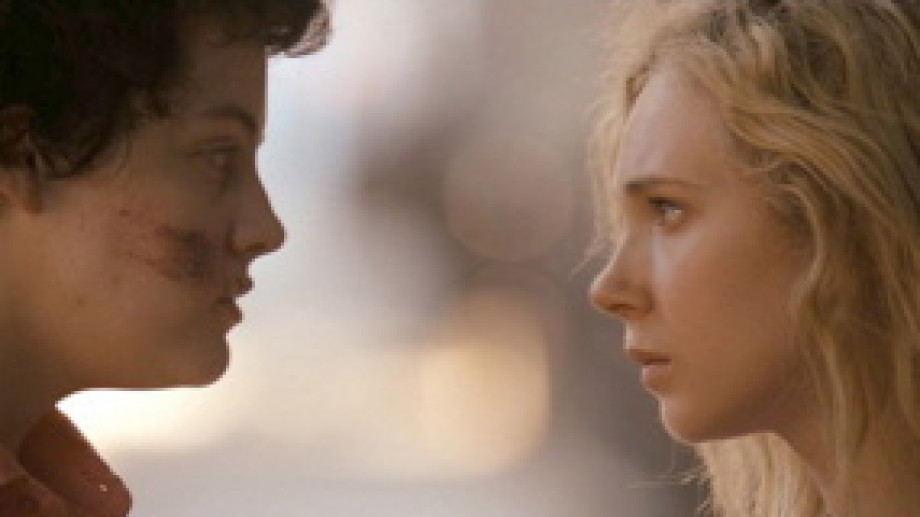
This is first in a series of articles from the Locarno Critics Academy, a group of emerging critics and journalists covering this year's Locarno Film Festival.
The Piazza Grande is the centerpiece of the Locarno Film Festival. For the duration of the festival a square in the middle of the town gets transformed into a huge outdoor cinema, featuring a gigantic screen and seating for 8000 film fans. The surroundings are so beautiful and the screen so impressive that it’s easy to believe that anything that plays there would automatically rise to the occasion to become a transcendent cinematic achievement. Unfortunately, that’s not really the case. The festival’s opening night took place on Switzerland’s national holiday, so it was necessary to screen something that would not be overpowered by the boom of fireworks surrounding the Piazza. The film chosen, the British cop thriller The Sweeney, was successful in that regard, but unfortunately that’s really the only successful thing about it.
Ray Winstone stars as the head of a police squad that investigates robberies and violent crimes. The film includes almost every single cliché of the genre, especially Winstone’s character himself: a tough, no-nonsense, morally dubious cop who gets results but is being investigated by internal affairs. The squad starts investigating a jewelry store heist and soon you realize that the film isn’t interested in doing anything other than offering a B-movie cop story played completely straight. In fact, it’s played so straight that it’s almost impossible not to start wondering whether the film is a put-on, that perhaps it’s working as some sort of practical joke; offering up every single thing you’ve seen before in a cop film and giving you literally nothing new in return. But by the time the film culminates in a car chase through a trailer park, you realize that there isn’t anything that interesting going on. In fact, the film is a lot like the trailers the characters are circling; prefabricated and thin, looking like an adequate replacement for something more substantial but ultimately not worth much.

A far more enjoyable experience was watching Otto Preminger’s 1952 film Angel Face, which played in one of the festival’s largest screening rooms as part of a retrospective of the director's work. Robert Mitchum plays Frank Jessup, an ambulance driver with dreams of opening his own auto shop. He gets involved with a young woman played by Jean Simmons who’s scheming to kill her rich stepmother. Unlike most film noirs in which an innocent man gets duped by the femme fatale, you never get the sense that Mitchum’s character is a pawn in someone else’s game. He knows that Simmons is playing with him and is often a few steps ahead of her. Simmons’ character is also far more developed than most archetypical femme fatales; she’s given a conscience and actual moments of regret over her crimes. But perhaps the most remarkable thing about the film is its structure: just when you think it has settled into a single genre, it takes a turn into something quite different. It starts off as a film noir, then turns into a courtroom drama and finally ends up as a searing melodrama, but tonally it all fits together as a piece; turns are never so drastic as to take you out of the film. Locarno prides itself on celebrating the past, present and future of cinema and the inclusion of Angel Face, along with the entire Preminger retrospective, is a testament to that.

Bradley Rust Grey’s film Jack & Diane tells a story that one has seen before, that of a young couple falling in love. But the tone and focus with which the film tells that familiar story is quite remarkable. Juno Temple plays Diane, a British girl staying with her aunt in New York for the summer. She meets Jack, a punkish girl played by Riley Keough, and they quickly fall in love. Instead of focusing on the passion or lust inherent to new love, though, the film almost exclusively looks at the scary and disturbing elements that come with attraction. In a bold creative choice, this is represented with occasional flashes of the characters transforming into monsters and attacking each other, or cuts to fleshy organs sprouting hairs and becoming warped. The monsters are well designed, fleshy and genuinely gross, and their limited screen time works in their favor. As metaphors for the fear of surrendering oneself over to a new lover, these elements work quite well and often manage to be genuinely unsettling. Unfortunately, Jack & Diane features some elements that never quite come together, like a subplot featuring Diane’s twin sister, and the characters suffer a bit from being underwritten. Ultimately, though, the film offers an incredibly satisfying emotional payoff.
One element which has made each screening special is how willing the audience at Locarno is to express themselves vocally. The final shoot-out of The Sweeny resulted in audible cheers and applause; the crowd gasped at the plot twists and turns in Angel Face and snickered derisively at the monsters in Jack & Diane. This sort of vocal expression adds a significant amount of energy to a screening and shows just how invested the audience is not only in seeing a film, but in interacting with it. Nobody watching a film in Locarno is doing so passively. This is especially invigorating when the audience’s experience doesn’t synch up to your own, making you want to defend your opinion against that of the audience and keep the conversation going beyond the screening itself.
Ari Gunnar Thorsteinsson lives in Stockholm, Sweden and is a co-host of the Movie Homework Podcast, which can be found on moviehomework.com and in iTunes.
More dispatches from the Critics Academy participants will be published on FilmLinc.com through the end of the Locarno Film Festival on August 11. Keep watching for their bylines in the coming days!



